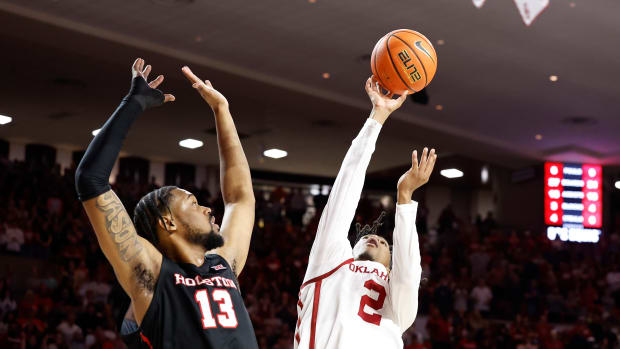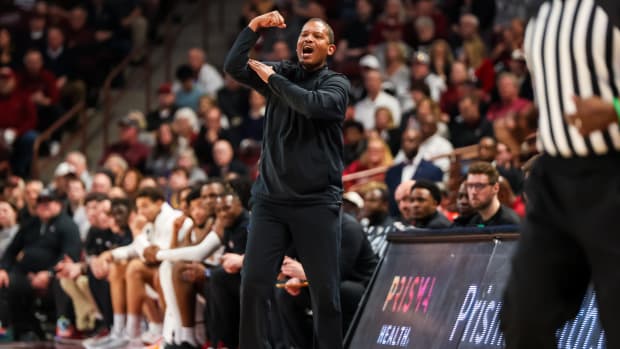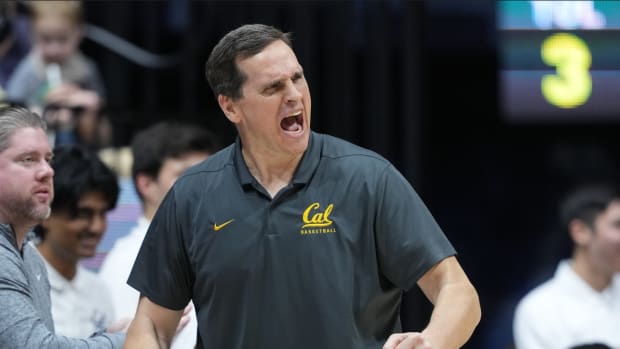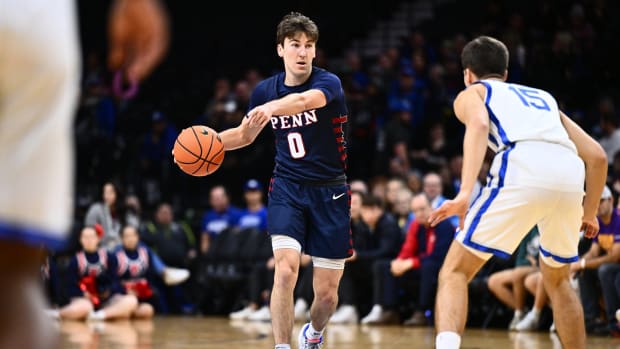Brackets Beware: Sniffing Out ‘Extreme Teams’ in This March Madness
Three years ago, as part of a larger historical analysis of the 2019 men’s NCAA tournament field, I coined a term called “Extreme Teams.” An Extreme Team, I explained, is one that ranks in the top 10 of KenPom in efficiency on either offense or defense, and outside the top 50 in the other (if it ranks outside the top 100 in the other, I dub it a “Super Extreme”). Extreme teams have appeared in the NCAA tournament every year of the KenPom era (since ’02), and as part of my research, I examined how each one has done in the bracket—especially relative to expectation of its seed.
Since 2002 (not counting the ’19–20 season, when there was no March Madness), there have been 155 Extreme Teams in men’s college basketball. Of those, 134 (86.5%) made the NCAA tournament, but none won the national title. Thirteen (9.7%) of those 134 advanced to the Elite Eight, with only four (0.3%) making the Final Four. A fifth Final Four team, ’13–14 Wisconsin, just missed out on qualifying as an Extreme after entering the tournament with the No. 50 defense.
What does this tell us about this year’s bracket? The biggest thing, arguably, is that No. 3 seeds Purdue and Texas Tech are carrying a red flag, at least when it comes to their title chances. If the Boilermakers or Red Raiders cut down the nets in April, they’ll be doing something unprecedented in the last two decades. Even making the Final Four would put them in rare company.
But hang on a second, you might be thinking. How many Extreme Teams were even seeded high enough to be realistic contenders for a national title? It’s not a long list; just three No. 1 seeds (which shows how hard it is to be a top seed if you’re notably unbalanced), 10 No. 2 seeds and 15 No. 3 seeds (below that, any team—Extreme or not—faces severely long odds to win it all). Tellingly though, only one of those 28 teams, Marquette in 2003, made the Final Four. So history isn’t on the Boilers’ and Red Raiders’ side.
What about Extreme Teams from outside the top-three seeds? Does their historical performance give clues about this year’s bracket?
Below, you can see a chart showing the percentage difference for every seed line in terms of how all teams with that seed have historically done (H/T BracketOdds) vs. how Extreme Teams with that seed have done since 2002. Green means those Extreme Teams, on average, have fared better than their overall seed’s history; red means they’ve done worse. For this purpose, meeting expectations means a team went as far as its seed is “supposed to” (e.g., a No. 4 seed reaches the Sweet 16); exceeding them means it went at least one round further (e.g., a No. 3 seed reaching the Elite Eight).
As you can see, there’s a lot of red. For whatever reason, the only seeding lines that have generally been kind to Extreme Teams are No. 4, No. 7, No. 8 and No. 12. Some of this is almost certainly statistical noise and random luck (for example, why such a difference between No. 8 and No. 9 seeds, who are playing an essential coin-flip first-round game, anyway?), but some of it makes sense. If you’re a No. 2 seed with a relatively weak defense (or offense), it’s typically not a surprise when that gets exposed in a tournament setting, regardless of how good you are on the other end. One year ago, No. 2 seeds Ohio State and Iowa were both Extreme teams that were weak on defense. The Buckeyes famously got bounced by No. 15 Oral Roberts in the first round; the Hawkeyes got shredded for 95 points in a second-round defeat.
No. 5 seeds that are Extreme Teams have also proved to be particularly vulnerable, though 2021 Villanova bucked that trend by reaching the Sweet 16 (and without star Collin Gillespie, to boot). No. 5 Tennessee, though, saw its offensive struggles catch up in a first-round exit elsewhere in that ’21 bracket.
Let’s get to the part you’re waiting for: Besides Purdue and Texas Tech, who else is an Extreme Team in this year’s men’s tournament? Here’s the list:
No. 3 Purdue (No. 3 offense, No. 100 defense)
No. 3 Texas Tech (No. 1 defense, No. 65 offense)
No. 5 Iowa (No. 2 offense, No. 77 defense)
No. 5 Saint Mary’s (No. 9 defense, No. 63 offense)
No. 6 LSU (No. 5 defense, No. 89 offense)
No. 8 San Diego State (No. 2 defense, No. 157 offense)
No. 11 Iowa State (No. 10 defense, No. 151 offense)
Additionally, there are four teams that are not officially Extremes but came quite close: No. 6 Alabama, which is 14th on offense and 94th on defense; No. 7 Ohio State (13th on offense, 131st on defense; No. 10 Davidson (11th on offense, 152nd on defense) and No. 13 South Dakota State (12th on offense, 220th on defense).
Going purely on the statistical history, you could surmise that Purdue and Texas Tech are only slightly less likely than a typical No. 3 to reach the Sweet 16, but there might not be a ton of value in picking them to go further (only three of the previous 15 No. 3–seed Extremes have reached the Elite Eight). Iowa and Saint Mary’s backers might want to think twice—13 of the 19 No. 5 Extremes have lost in the first round, and 42% of the five vs. 12 upsets since 2002 happened to Extreme Teams. However, since Feb. 1, both have been more balanced (Iowa with the No. 51 defense; Saint Mary’s with the No. 43 offense, per T-Rank)—perhaps that recent improvement will push them out of danger.
San Diego State could be at an advantage as a No. 8, though I’d be hesitant to read too much into that seed’s historical sample size given the contrast with No. 9s. Across all of this year’s Extreme Teams, though, there’s nothing in history to suggest they’re particularly likely to go deeper than their seed portends.
Will the predictive trends come to pass this March? Only time will tell. Remember, there are almost always exceptions (even four out of 134 teams making the Final Four means it’s been done!), and the unpredictability of the tourney leaves a lot of room for variance. And sometimes teams that are weaker on one end improve as the tournament goes, or have already started improving in the final stretch of the regular season. So if you’re looking for an edge in your bracket pool, consider this a guide—but not gospel.
More March Madness Coverage:
• SI’s Experts Fill Out Their Tourney Brackets
• Ranking the 2022 Cinderella Candidates
• Men’s Bracket Breakdown: A Region-by-Region Guide














